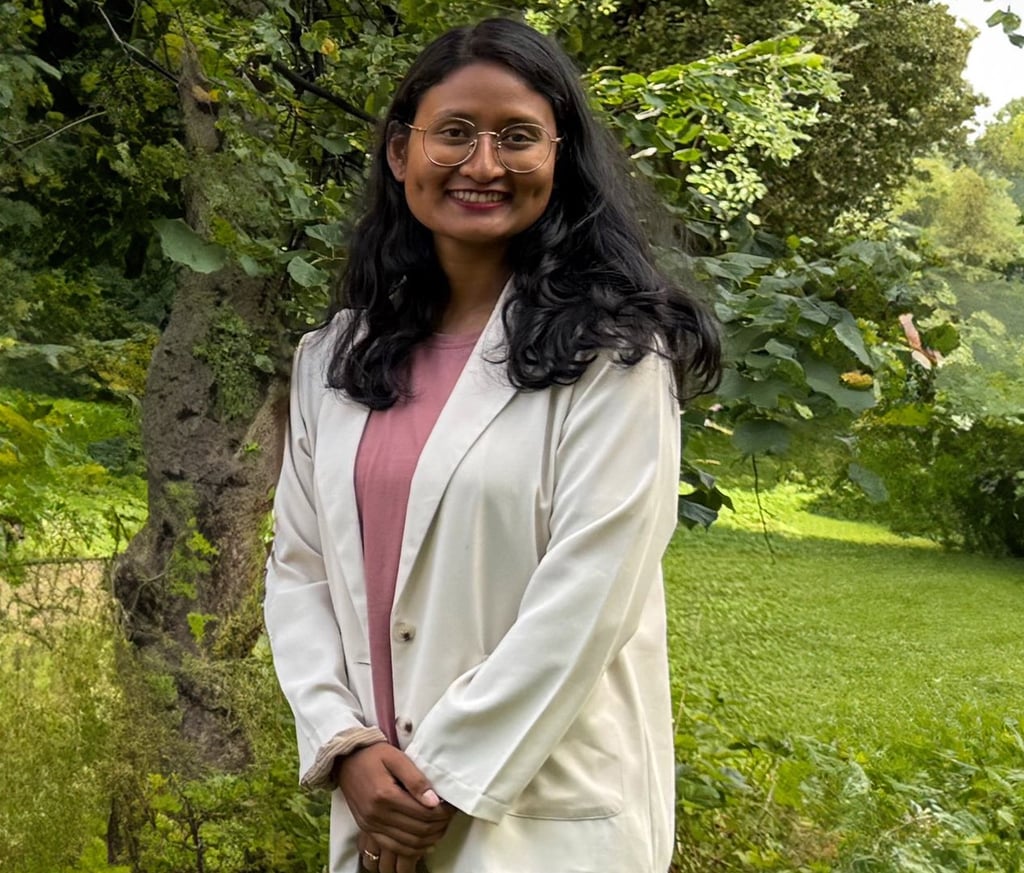Meet Manju, the new PhD student in the Cell Wall Dynamics team
A short interview with Manju on her background, interests, and plans for exploring how plants sense changes in their cell walls in the "Watchers on the Wall" project
NEWS
Cell Wall Dynamics Lab
8/15/20252 min read


We are excited to welcome Manju Maharjan as a new PhD student in our lab at the Umeå Plant Science Centre. She will work on the VR-funded Watchers on the Wall project, exploring how plants sense and respond to early changes in their cell walls during immune responses. Using precision tools such as optogenetics and artificial cell walls, she will study how nanoscale mechanical and chemical alterations influence the plant’s cell wall integrity monitoring system and pattern-triggered immunity. We asked her a few questions about her background, research interests, and what she is most looking forward to during her PhD.
Q: Where are you from and what is your academic background?
A: I am from Nepal, where growing up in the Newah Indigenous community and its close ties to nature inspired my interest in plants and biodiversity. As a result, I earned my Bachelor’s in Botany at Patan Multiple Campus, Nepal, focusing on plant use in Newah culture, and later completed a Master’s at National Taiwan University, Taiwan, where my research was mainly focused on plant tissue culture, histology, and genetic transformation.
Q: What drew you to this PhD project or topic?
A: At first, I saw the cell wall as just a protective barrier, but learning that it can actually sense signals and influence plant metabolism really fascinated me. That’s why this PhD project excites me—I’m eager to explore how cell walls respond early to different elicitors and how plants use these mechanisms to defend themselves. I believe this understanding could also open up valuable applications for improving crop resilience.
Q: What are you most looking forward to working on in the lab?
A: I’m most looking forward to studying how cell wall dynamics shape plant development and adaptation. I’m excited to learn advanced molecular and imaging tools available in this lab. For me, this PhD is not just about deepening my knowledge—it’s a chance to grow into an independent researcher in a collaborative and innovative environment.
Q: Have you worked on related research before? If so, what was it about?
A: Yes, to some extent. Before starting my PhD, I worked as a Research Assistant at the Institute of Plant and Microbial Biology, Academia Sinica, where I studied Physcomitrium patens. I mainly focused on a protein called SLEEPING BEAUTY, which helps maintain cell wall integrity. I was particularly interested in how it responds to osmotic stress, since the cell wall is the first plant component to encounter any environmental changes during the transition from water to land.
Q: What skills or approaches are you hoping to develop during your PhD?
A: During my PhD, I hope to gain expertise in cutting-edge plant science techniques, as Umea Plant Science Center (UPSC) has a well-equipped laboratory. I’m particularly excited to learn dual Raman-Brillouin microscopy to simultaneously study mechanical and chemical changes in plant cell walls.
Q: Outside the lab, what do you enjoy doing?
A: Outside the lab, I enjoy reading stories about Indigenous cultures and playing badminton. I also serve as an Ambassador for the Indigenous Youth Storytellers Circle with Terralingua, an organization dedicated to biocultural diversity. I write stories about Indigenous people, their culture and their connections to nature. You can read more about this part of me here:https://terralingua.org/indigenous-youth-storytellers-circle/
Q: One fun fact about yourself
A: I often try things I think I’ll never be good at—only to discover I actually enjoy them and sometimes even surprise myself with the results.
We look forward to seeing Manju develop these innovative approaches and uncover new insights into how plants integrate physical and biochemical cues to defend themselves. Welcome to the team!
